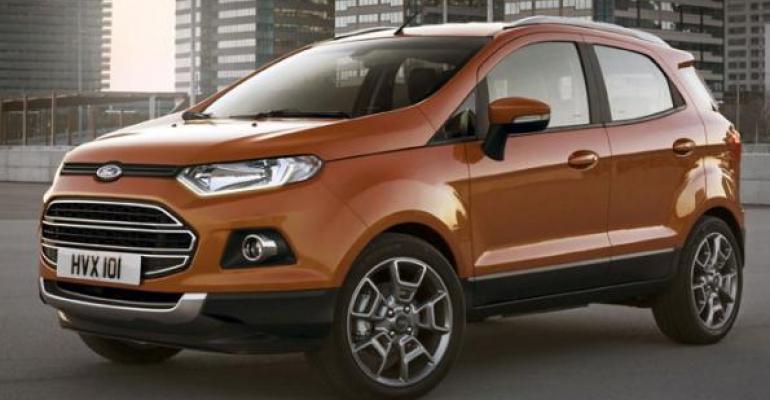DEARBORN, MI – Sales of Ford utility vehicles have been skyrocketing worldwide, with the exception of fullsize body-on-frame SUVs.
Since 2005, global demand for those big, truck-based vehicles have fallen 22%, the auto maker says, though it has no intention of pulling the plug on such models as the Ford Expedition and Lincoln Navigator.
“We think that’s a stable group of customers, and we don’t see that segment going away or dramatically changing,” Jim Farley, executive vice president-global marketing, sales and service and Lincoln, says at a media backgrounder here.
Although fullsize-SUV sales remain stable, Farley says customers are taking notice of the fuel-economy improvements in other vehicle segments and expect to see similar innovations in their models. The ’13 Expedition equipped with a 5.4L V-8 achieves a modest 13/18 mpg (18.0-13.0 L/100 km) city/highway.
“There’s still quite a bit of transformation that is going to have to happen in the execution of the product, but it’s an important and stable segment,” Farley says, declining to reveal what improvements Ford is planning.
Fuel economy is top of mind among many consumers, especially in mature markets such as the U.S. and Europe, but it’s of little concern to customers in the Middle East, an important export destination for the Kentucky-built Expedition and Navigator.
“Expedition and similar-sized vehicles are extremely popular (in the Middle East) and one of the most important exports from the U.S.,” Farley says. “In the Middle East fuel prices are negligible, so it’s a great solution for those customers.”
In 2012, 41% of the 67,434 Expeditions built were exported to the Middle East, according to WardsAuto data.
Other. auto makers also are exporting their U.S.-built fullsize, truck-based SUVs in relatively big numbers to the region. Toyota shipped 43.9% of the 27,128 Sequoias fullsize SUVs it assembled in 2012 to the Middle East, while General Motors exported 8.9% of its Chevrolet Suburban and 37.8% of its GMC Yukon production to the region.
Sales of other Ford utility vehicles have been on the rise, especially in markets such as California, where the Detroit Three historically have struggled.
Explorer midsize SUV deliveries rose 43% in the state through April, Ford says, while sales of the Escape small cross/utility vehicle jumped 51%. In first-quarter 2013, the auto maker says it captured 15% of the California utility segment, up six percentage points from 2006.
Ford also is having success with its utility lineup globally. Demand for small Ford utility vehicles has shot up 154% since 2005, while sales of medium-sized models have risen 56%.
“In North America, we took (utility sales) for granted,” Farley says. “Now it’s happening around the world.”
The growth in global utility-vehicle sales is expected to continue. By 2017, deliveries will rise 12% in North America, 26% in Europe and 30% in the Middle East and North Africa, Ford predicts. Demand will jump 101% in China and 36% in Southeast Asia, the auto maker adds.
B- and C-sized CUVs are expected to account for 12% of total global vehicle sales by 2017. Ford is hoping to capitalize on that growth with its Escape and Kuga C-segment CUVs and B-segment EcoSport.
The EcoSport, a longtime best-seller in South America, also is sold in Europe, China and Russia. Farley says Ford is mulling whether to offer the model in the U.S.
“EcoSport is a ‘One Ford’ product, so we have that ability (to sell it in the U.S.),” he says. “It’s a very small market here in the U.S., but as a leader we’re studying it very closely.”
Utility vehicles, especially body-on-frame SUVs, were hot sellers in the U.S. in the 1980s and 1990s until rising gasoline prices caused consumers to edge away from the segment.
Farley says the current rising popularity of utility vehicles overall is sustainable, noting newer, car-based models are more fuel-efficient than their predecessors and are attracting Baby Boomers looking to downsize.
“The death of utilities was premature; it just came back in a different form,” he says, noting today’s consumers aren’t interesting in the rugged, off-roading image of earlier SUVs. “Today the idea of a utility is in an urban setting. It’s quite different than the 1980s.”





